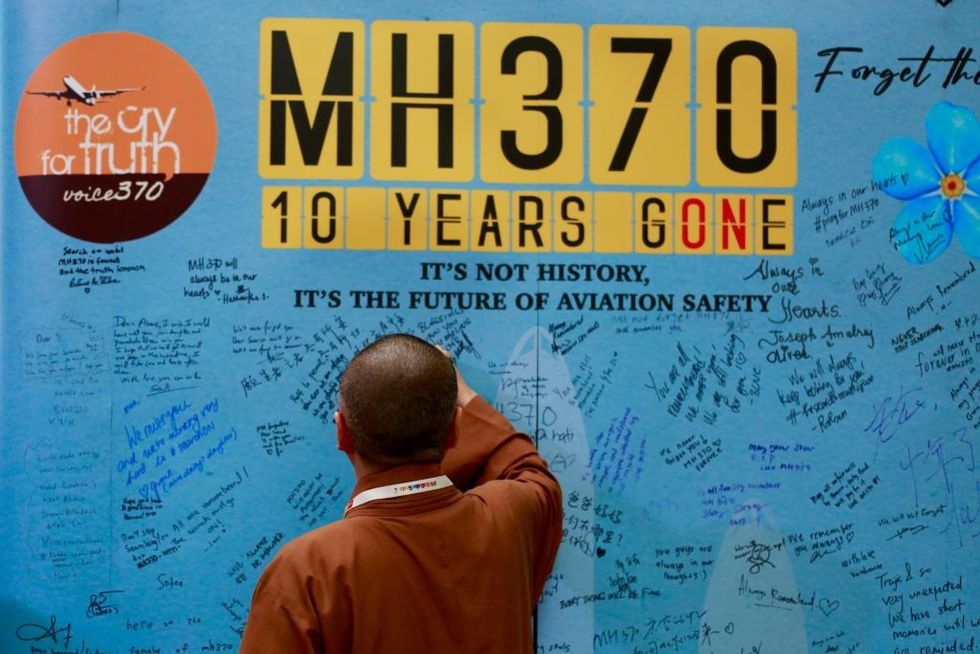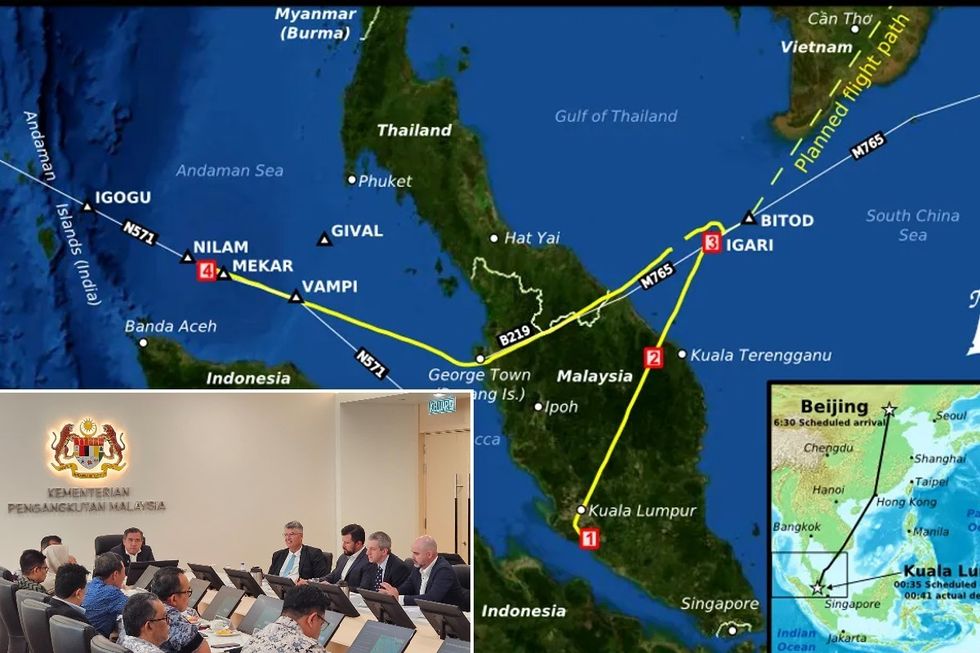An aviation expert may have cracked the code to solve one of modern aviation’s biggest mysteries.
Malaysia Airlines flight MH370 disappeared in March 2014 with researchers and investigators still stumped as to its whereabouts.
The flight disappeared from radar on March 8, 2014, while flying from Kuala Lumpur International Airport in Malaysia to Beijing Capital International Airport in China.
Now, US-based science journalist and private pilot Jeff Wise is launching a new experiment, which he believes could hold the key to locate where the plane may have crashed.
 Families write on the memorial wall for victims of MH370Getty
Families write on the memorial wall for victims of MH370GettyThe experiment revolves around placing a replica of a piece of debris in the likely crash site and remotely monitoring marine growth on that piece, in order to try to establish whether the plane did indeed end up in the Southern Indian Ocean.
Wise said the outcome of his new experiment could help point the needle in the direction of what happened to the craft. He told MailOnline: “It is the most baffling case – most are far more straight forward.”
He compared the case to another aviation mystery: Air France Flight 447, which crashed into the mid-Atlantic Ocean on June 1, 2009, killing all 228 passengers and crew on board while en route from Rio de Janeiro to Paris.
The craft’s flight recorders were only recovered from the Atlantic Ocean in May 2011, and the final report in 2012 concluded that mechanical faults and incorrect crew reaction had caused the accident.
LATEST DEVELOPMENTS IN THE MYSTERY OF MH370
- MH370: Bombshell new data exposes two MAJOR revelations as mystery of missing Malaysian Airlines plane begins to become clear
- MH370 mystery could finally be solved after six-second sound signal detected by underwater microphones
- MH370 mystery: Expert pinpoints ‘perfect hiding place’ where missing Malaysian Airlines flight vanished
 MH370 search hope renewed as Ocean Infinity puts forward new plans to find missing Malaysian Airlines flightWikiCommons/Facebook (MH370 Families)
MH370 search hope renewed as Ocean Infinity puts forward new plans to find missing Malaysian Airlines flightWikiCommons/Facebook (MH370 Families)Earlier this year, Independent travel editor Simon Calder said he MH370 mystery could finally be solved after an “extraordinary piece of research.”
He told GB News: “This is an extraordinary piece of research by a British researcher, which basically realised that if you’ve got a 200-tonne aircraft, which very sadly disappeared in 2014 somewhere over the Indian Ocean, it’s going to make quite a noise.
“There are, unbelievably, these so-called hydrophones, underwater microphones, designed to make sure that people are abiding by the Nuclear Test Ban Treaty. He reckons he’s picked up a six second burst of sound, which could be MH370 plunging into the Indian Ocean.
“He knows which one it is, and that could help investigators narrow down the search area.”
WATCH: Simon Calder speaks to GB News about MH370
The final transmission from the Malaysia Airlines plane was about 40 minutes after it took off from Kuala Lumpur for Beijing. Captain Zaharie Ahmad Shah signed off with “Good night, Malaysian three seven zero”, as the plane entered Vietnamese air space.
Shortly thereafter, its transponder was turned off, which meant it could not be easily tracked.
Malaysian Prime Minister Anwar Ibrahim said in March the government is willing to re-open an investigation into the disappearance of MH370, if there was a compelling case to do so.